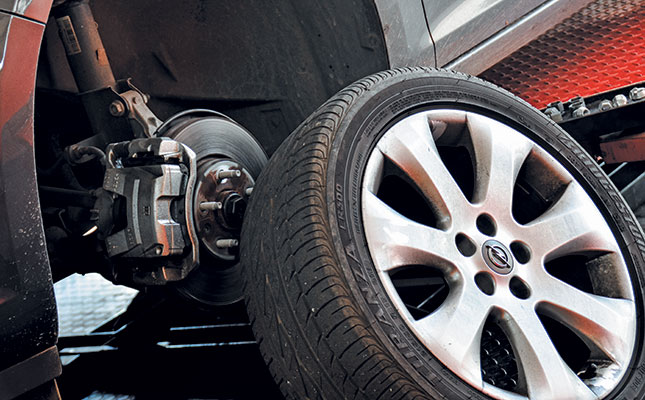
Photo: FW Archive
We’ve all experienced that feeling of helplessness when an appliance suddenly refuses to work. It needs repairing, but we don’t know which workshop can be trusted to perform a proper repair without overcharging.
This situation applies particularly to the motor industry, where a shortage of properly trained mechanics has eroded the public’s trust in what can be expected from the average workshop.
You can help yourself by learning a few basics that will enable you to do some simple maintenance on your own.
Use the internet, but with caution
Step one is to learn enough about the workings of a vehicle to know when a mechanic is either lying or ignorant. There are thousands of articles and videos on the Internet that will explain how components work or how they can be repaired.
Unfortunately, many contain poor advice, so check the URL, the website’s domain name; it usually tells you whether the information comes from a university, a college, an automotive company, a motor club or a private person. You’ll soon learn which sites can be trusted.
Next, make friends with a good mechanic or search for a workshop whose work and advice you can trust. Give the workshop written instructions, or make sure the job card reflects what you asked for.
Request a written quote. If you think the quote is too high, get a second opinion before giving permission for somebody to work on your car. Don’t supply vague instructions such as ‘Fix the misfire’. Rather ask the mechanic to establish the cause of the misfire and quote for a repair.
Some mechanics are poor at diagnosing problems; they would rather change parts until the problem goes away. With some knowledge and the Internet, there is every chance you can perform your own diagnosis.
Changing the following items is fairly simple in any car, and even easier in a bakkie because there’s more space and ground clearance:
Engine oil and oil filter
Let the engine idle for a while to get its temperature up so that most of the oil drains away. Ensure that the car is on level ground. Remove the oil filter with a specialised removal tool available from any motor accessories outlet.
When you replace the filter, replace the old gasket on the mounting surface with a new one after wetting it with oil. This is important, as the lubrication will ensure that when you tighten the new filter (by hand only) the tightening torque will be correct.
When the new filter is in place, let the engine run for a few minutes and make sure there are no oil leaks.
Finally, remember to fill the sump with fresh oil! Forgetting to do so is a surprisingly common mistake.
Accessory belts
These come in three varieties. They should be inspected properly for wear and cracks on the inside; that is, the side that runs against the pulleys.
An old-fashioned V-belt requires a play of about 3cm at the longest run while the modern multi-ribbed belt requires only 1,5cm.
The latest serpentine belts have a spring-loaded pulley to keep the tension at the correct level, and you’ll need a workshop manual or the Internet to tell you how to go about getting the initial tension right. The tensioner should be replaced at the same time as the belt.
The air filter and inline fuel filter
Replacing these is straightforward and requires no explanation.
Brake pads
Most brake pads are easy to replace. Sometimes, though, the disc brake pistons can get in the way. In this case, use a small wooden stick (not a screwdriver) to push them away from the pads so that you can get the pads out.
If there are plates behind the new pads, make sure that they are included; they are designed to dampen brake squeal.
The level in the brake fluid reservoir will rise due to the increased thickness of the new pads; keep your eye on this to prevent spillage.
Brake shoes
These can be replaced without spilling any brake fluid on the ground if you use wire or even string to tie the wheel cylinders together so they cannot pop out.
Start by photographing the brake assembly with your cell phone to make sure your final assembly will be correct. Brake shoes can be difficult to get back into position because the return springs are very stiff.
Special brake spring pliers are available, but you should be able to use a large screwdriver to lever the shoes into position after hooking the springs in.
Adjust the brake shoes inward before trying to get the drum back; adjust them outward when the job is done. To do this properly, click the mechanism until the drum becomes difficult to turn, and then go one click back.
Buying parts
Motor manufacturers insist that their original equipment (OE) parts are the best buy, but some aftermarket parts will do the job just as well:
Genuine OE parts
These parts, which are sold by the manufacturer’s agent, are usually made by the same company on the same production line as the parts supplied to the assembly plant. They are often the best, but there are exceptions.
For example, aftermarket tyres that appear to be the same as the OE units are seldom as vibration-free as the OE tyres, as the motor manufacturer insists on getting the pick of any production batch.
Parts identical to the OE parts
These are made in the same plant, but sold by independent spares shops. They are packaged in a different box, and may be cheaper.
Parts similar to the OE parts
These are made by an outside company and carry this company’s trademark. Some are very good.
Cheap and inferior parts
These are packaged to look like OE parts and carry a name close to the OE name. The quality of the packaging is usually inferior, with no rust protection and the part itself is often rusty.
Obviously inferior parts
These may even come in plain, unlabelled packaging.
Replacing an engine or a vehicle
If there are no oil leaks, but significant oil consumption that goes hand in hand with increased cylinder bore, piston and ring wear, it means that replacement time is near.
A bearing knock is also a sign that the engine requires urgent attention.
The correct time to replace a car, bakkie or tractor depends on several factors. Wear and tear in the vehicle, expected future failures, and the availability of a suitable replacement all play a role in the decision.
There are no hard and fast rules, but in general, any mileage above 250 000km (more or less) in a car is a bonus. If you keep the vehicle for much longer, you can expect some sort of breakdown.
The engines fitted to 1t bakkies develop less power per litre of petrol, so they tend to last longer than car engines. The engines of heavy trucks last even longer because their kW/ℓ output is even lower.
A version of this article first appeared in Farmer’s Weekly, 30 September 2016.











